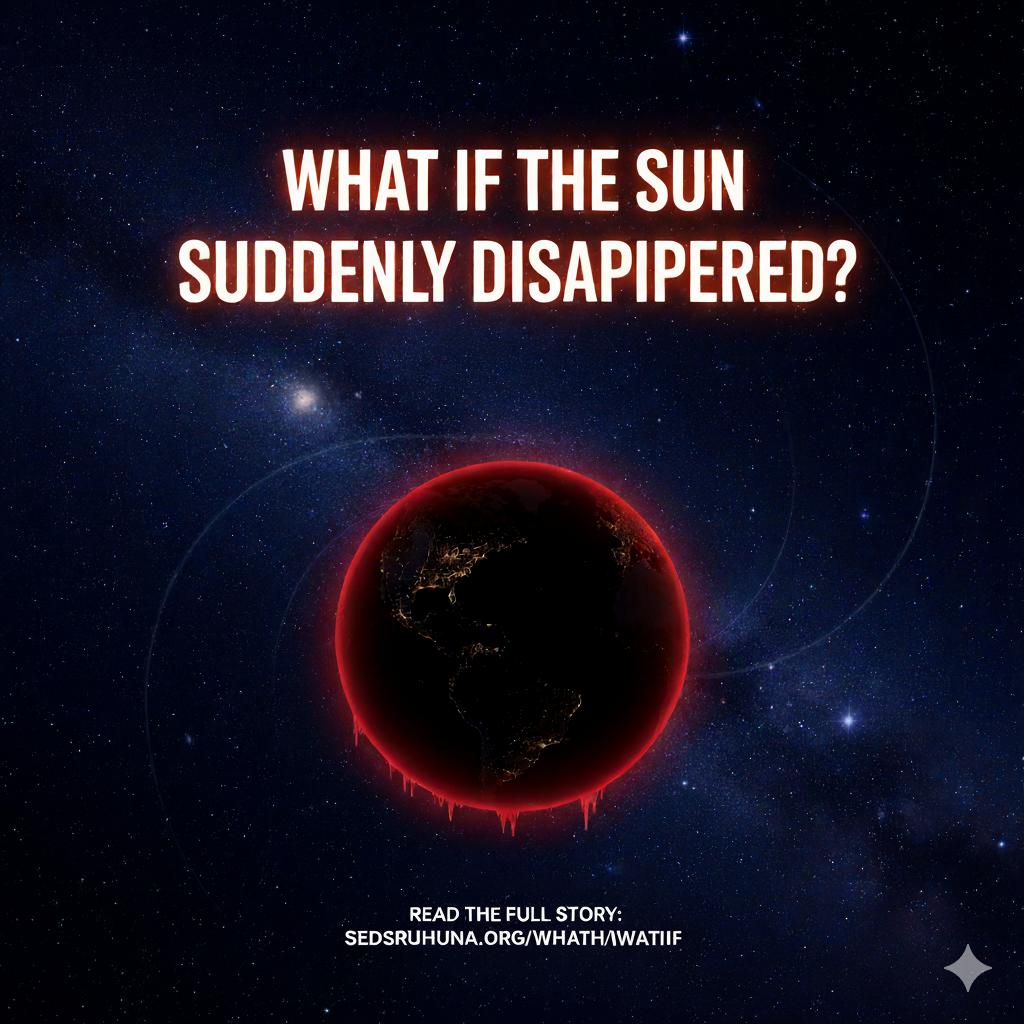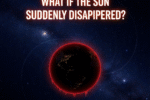
Imagine it’s an ordinary day — sunlight spilling through the windows, birds flying, life going on as usual. And then, in an instant… the sun vanishes. 🌞💨
It sounds like pure science fiction, but what would actually happen to Earth and everything on it?
🕒 The First 8 Minutes
Nothing. Absolutely nothing — at least, not right away.
Light from the Sun takes about 8 minutes and 20 seconds to reach Earth. That means for those brief moments, we’d still see sunlight and feel warmth… even though the Sun no longer exists.
🌍 After 8 Minutes — Darkness Falls
Once those 8 minutes pass, the world would be plunged into total darkness. The skies would fill with stars like never before. The Moon and planets would vanish too — because they don’t emit their own light. At the same instant, Earth would fly off its orbit, moving in a straight line into space at 30 km/s, because the Sun’s gravity would no longer be holding it.
❄️ The First Few Days

Within a week, the average global temperature would drop below -17°C.
Within a year, it would reach -73°C. The oceans would start freezing from the top down, but the deep layers would stay liquid for centuries due to Earth’s internal heat.
💨 What Happens to Life?
- Plants would die within days without sunlight.
- Herbivores would starve soon after.
- Humans might survive for a while using geothermal or nuclear energy, but only in underground shelters.
Ironically, our cities would glow for a while — with artificial lights being the last traces of a once-sunlit civilization.
🌌 The Cosmic Ending
As Earth drifts into the darkness of interstellar space, it becomes a frozen, lifeless world, orbiting nothing — a ghost planet carrying the memories of a vanished star.
💭 The Sun doesn’t just give us light — it gives us life, gravity, and meaning.
This “What If” reminds us how fragile our home really is… and how everything we know depends on one star.





